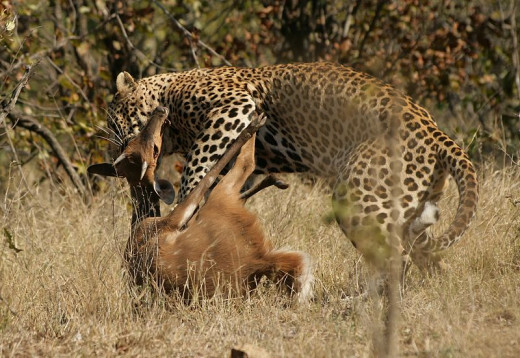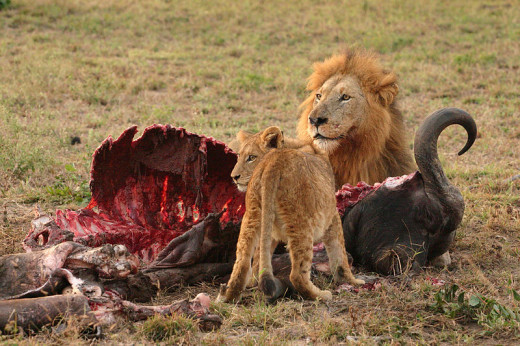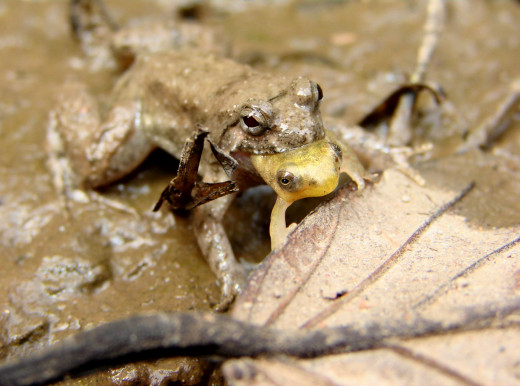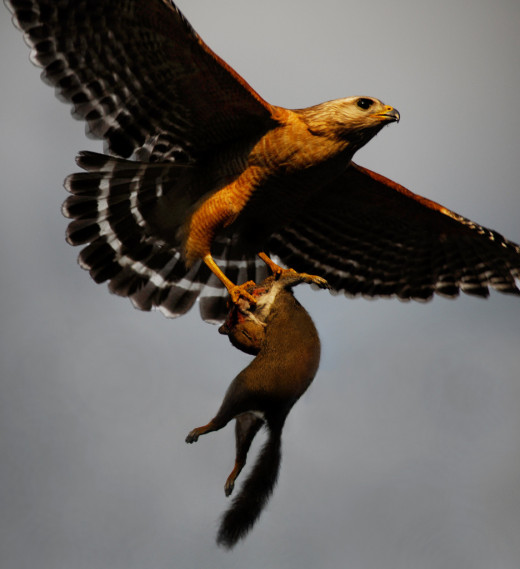Photo Series-Animal Predators


There is probably nothing better than to go out into nature and photograph many of its wild inhabitants. You not only get to spend time among the peacefulness that many nature scenes offer, but you can be privy to photographing many beautiful wild creatures as well.
There is something beautiful about looking at a picture of all the wonders that nature has to offer. But like most everything in life, nature can often present us with images that are nothing short of brutal.
Many photographers who make a living from their nature photography often come upon shots that are brutal and usually not fit for audiences. The images that sell the best are often those that feature beautiful vistas, cuddly little critters or majestic wildlife.
But the reality of it is that scenes that portray nature in its raw form do sell and are often sought after by specialized publications, scientific journals, and many other syndicated nature shows. These images are indeed difficult to photograph.
We are referring to predatory behaviors in the wild where one species hunts,kills and eats another;
In ecology, predation describes a biological interaction where a predator (an organism that is hunting) feeds on its prey (the organism that is attacked). Predators may or may not kill their prey prior to feeding on them, but the act of predation often results in the death of its prey and the eventual absorption of the prey's tissue through consumption. Other categories of consumption are herbivory (eating parts of plants) anddetritivory, the consumption of dead organic material (detritus). All these consumption categories fall under the rubric of consumer-resource systems. It can often be difficult to separate various types of feeding behaviors. Wikipedia
Not only does the photographer have to seek out the participants but he or she has to wait for hours just to have the chance of capturing the moment that a tiger pounces on a wilder-beast or gazelle and starts to devour it , often while the prey is still alive.
The moment when a male lion is triumphant and manages to dislocate the male head of a female pride, quickly and brutally kills any offspring of the former king. This is part of nature and although to us they may seem as inappropriate or disgusting it is what is real and there is no sense in denying them.
Predators will kill and consume their prey because that's what they do. It is the same with every kind that feeds on others; insects, reptiles, mammals, birds and fish.
You can capture scenes of the hunt, scenes of feeding and even scenes of cannibalism which are more common than most of us expect. This project does not assume that the photographer will capture regular pleasant images of nature at its best, on the contrary, the efforts should be aimed at taking photographs of scenes when nature is at its brutal worst.
Capturing these images usually means spending a lot of time studying your subjects and a lot of luck. The right equipment is also needed. For insects you will probably need a lens capable of macro imaging since their size alone makes it difficult to capture images that show much detail unless it is done at a close range.
For most other animals a long zoom or telephoto is a must since most subjects will flee upon your arrival and are not likely to hunt while you are near, plus you must consider your safety as well.
In other words, when photographing any predator you must give them their space or be at risk of paying the consequences. Do not be concerned with what you see through your lens. the images may be strong and make feel some revolt as well as pity for the prey. Remember that this is natural and concentrate on your technique and composition. Keep an open mind and approach it as you would any other professional photographic project.
Be attentive but be cautious and do not interfere under any circumstances. Not only is this not safe but it is often illegal. Use a photo set up that allows you to shoot at a fast rate. Don't worry if you can't pay attention to the images while you shoot as you will have time afterwards where you can examine each shot for clarity and detail and select the ones that best depicts the theme and show what the reality of the wild is.
Be prepared to spend countless hours tracking and observing behavior patterns. Soon you may even be able to anticipate when a predator is ready to make a kill.
The best tool for this is usually your vehicle but you must be aware of the terrain on which your subjects may be found.
Using a flash should be limited to subjects which are found under heavy brush or in heavy shadows or if photographing at night, in which case it must be a strong unit.
Use the top or windows of your vehicle as a "mount" so that you can stabilize your gear, specially with a long zoom or telephoto.
Unless you are very familiar with the territory it is best to use the services of a good guide and two people are better than one so while you photograph the other can keep an eye out so that you don't end up becoming a dangerous predator's next meal.
Also worth considering is that most predators are found in remote parts of the world such as Africa. Unless you go with a guide you not only risk getting lost, and not capturing any worthwhile images but your safety is also at risk.


- 12 Unassuming Predators of the Animal Kingdom | WebEcoist
These 12 animals may not look dangerous, but they've got surprisingly aggressive instincts and dangerous defensive mechanisms.Not all deadly creatures of the animal kingdom advertise the fact that they can do some serious damage. Some are cute and fu
- Top 10 Animal Predators | Care2 Healthy Living
Either run for your life or face the top 10 most feared predators of the animal kingdom. A list of the most common and lesser known top predators in the animal world. A seldom viewed list
© 2013 Luis E Gonzalez









